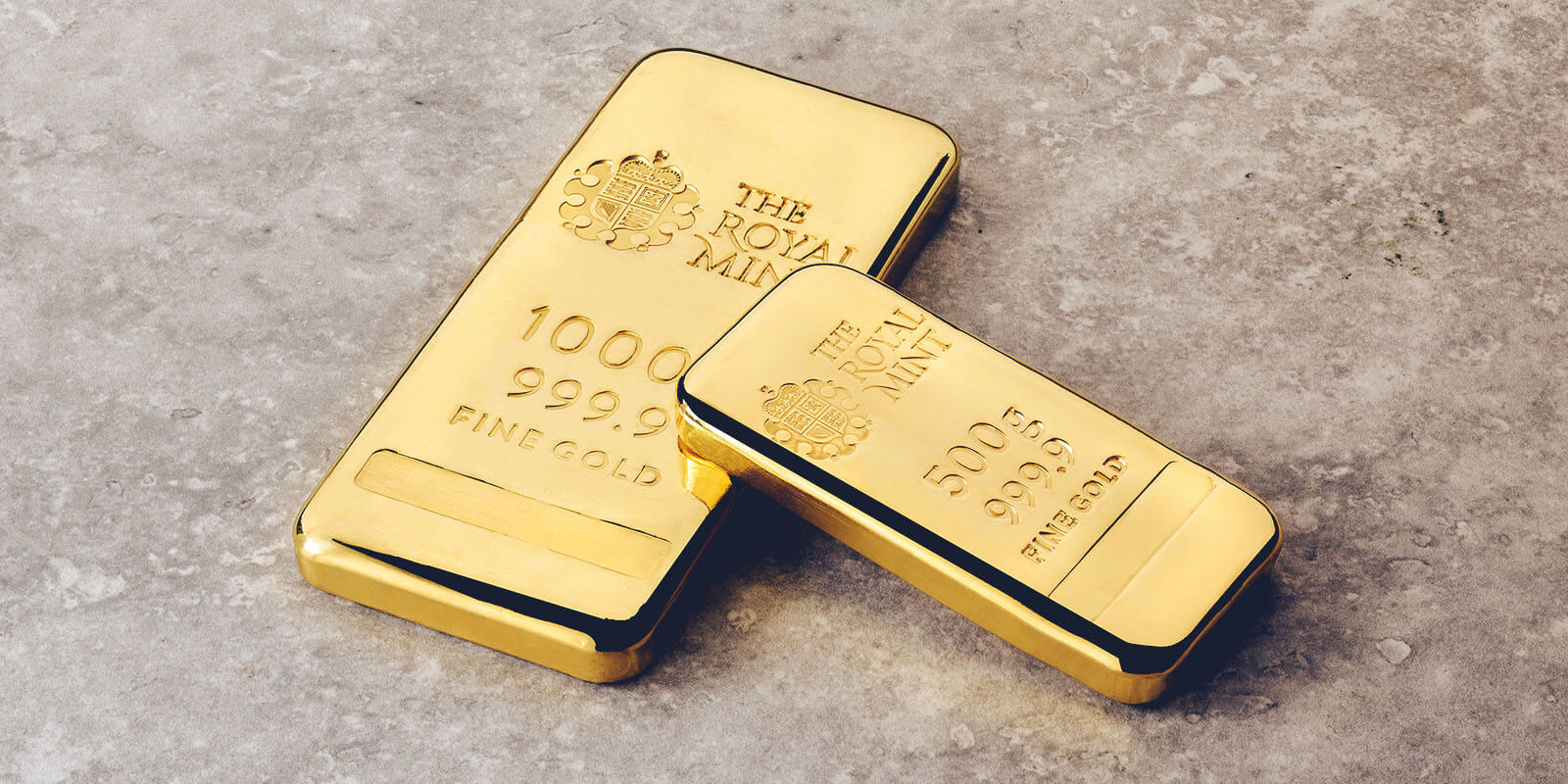When people talk about ‘bullion’ and precious metals, one of the first things which springs to mind has got to be gold bars. The allure of gold in any form has fascinated humans since the dawn of time, but the gold bar, in books and films, has come to symbolise the ultimate store of wealth. Although aspirations of owning your own Hollywood-style gold bar might seem unobtainable, it might surprise you to learn that investing in bars of pure gold, silver or platinum might not be as unrealistic as you think. As bars are available in a wide variety of weights, styles and sizes, owning your own precious metal bullion bar is actually a realistic investment option for most people. Bars are one of the many ways investors choose to gain exposure to the precious metals markets, and, alongside coins and digital precious metals, they continue to prove a popular choice.
The reasons for this continued fascination with bullion bars are clear. Due to the reduced associated manufacturing, design and production costs, bars tend to have a lower price point when compared to bullion coins. Similarly, when compared to digital precious metals, bars seem a far more physical and tangible option, which is preferable to some investors as they form a commodity that you can actually hold in your hand.
Of course, there are many other reasons why people choose to invest in physical bullion bars and use them as a way to diversify their investment portfolio, but how do they differ from other forms of precious metal investment?
VAT and Capital Gains Tax
Unlike bullion coins, profits gained from the sale or disposal of gold, silver or platinum bullion bars are subject to Capital Gains Tax (CGT). This is because investments in bullion bars do not hold the same protected status as bullion coins. Although this appears initially to put them at a disadvantage when compared to bullion coins, CGT is usually not a consideration for your average retail investor as most profits made will be under your annual tax-free allowance. Although they differ from bullion coins when it comes to CGT, the Value Added Tax (VAT) status of bullion bars is the same as can be found with bullion coins. This means that purchases of gold bars are not liable for VAT for non-VAT registered private individuals, but purchases of both silver and platinum bars are liable for VAT. Silver and platinum purchases are therefore subject to the standard VAT rate which is currently 20%.
Although the VAT status of silver and platinum is seen to put it at a disadvantage, especially when compared to gold, the price of both silver and platinum can change by more than 20%, even when measured over a relatively short period of time. Silver is often seen as a far more volatile precious metal when compared to gold, so any changes in the metal price can sometimes be enough to recoup your initial VAT charges.
As always, it is important to note that this information is not exhaustive and is provided for guidance only. Matters involving taxation tend to be complicated and, as such, further guidance should be sought from HMRC if you are unsure.
What Sort of Bars are Available?
As well as being available in gold, silver or platinum, bullion bars are also available in a number of different sizes. Gold bars are available from as small as 1g, which is about the size of a mobile phone sim card, to 400ozs, which is the sort of bar you often see portrayed in the movies. This wide range of sizes means that there is a bar available at most price points to suit every investor. The range of sizes in silver tends to be slightly more limited. This is because, comparatively, gold is more expensive and a 1g silver bar would be too costly to manufacture. With that said, both silver and platinum bars are still available in a wide range of sizes with larger silver bars available up to 100ozs in size.
In terms of designs, previously, bullion bars were not available in many designs as their purpose was simply to provide a straightforward means to acquire large quantities of precious metals. However, in recent years, bullion bars have been released that feature intricate designs, similar to those seen on bullion coins. These bar ranges are designed to bring some variety into bullion bars, and are appealing not just to investors, but also to collectors.
In addition, bars which feature designs may be available in more limited quantities and on a limited-release basis. This means that they may achieve a higher resale value, due to scarcity on the secondary market. In terms of resale value in general, bars of any metal can easily be resold to any vendor who purchases precious metals, including jewellers or precious metal merchants. The only downside of bars in this respect, when compared to coins, is that a single large bar has to be sold in its entirety, whereas multiple smaller coins can be liquidated over time.
How Much do Bars Cost?
In terms of the costs associated with purchasing bullion bars, this is usually dependant on the price of the precious metal they contain, as well as a ‘premium’ that is charged by the seller. This premium is typical across all precious metal types. However, as the production costs of bars tends to be lower than coins, the premium to purchase the same weight of metal tends to be cheaper when it is in bar format. In a similar way, as it costs less to produce one larger bar than multiple smaller bars, the premium over the ‘spot price’ of the precious metal tends to be less when purchasing larger bars. This is because it would cost less to produce one 100g bar than it would to produce one hundred 1g bars. As such, although they contain the same amount of precious metal, it would be costlier to purchase multiple smaller bars. Although this is an extreme example, the same would be true of purchasing five 1g bars when compared to a single 5g bar, albeit on a smaller scale.
How do I Store Bullion Bars?
In terms of storage, many investors choose to take delivery of their bullion coins, and bars are no different. Although some may choose to store their purchases with a third party, such as The Royal Mint or perhaps in a safety deposit box, many also choose to take delivery of their precious metals. This could be for any number of reasons, but if you do choose to take delivery of your bullion bars, there are a number of considerations that need to be made.
First and foremost, you need to ensure that your purchases are safely stored from theft or damage. This could be in a dedicated safe or just in an area in your home where you store other items from theft or damage. If you do choose to invest in a safe, there are a number of different safes available which each offer a different level of protection. As well as protection from theft, some home safes also provide protection from other disasters that might occur, such as fire or flooding. This means that a home safe can also be used to securely store important documents and even digital media such as flash drives and computer backups. If this option sounds like something you would like to consider, we suggest you consult with a retailer who specialises in consumer safes for guidance as they will be best placed to suggest to you an option that meets your individual requirements.
If storing your purchases at home does not sound appealing, as previously discussed, many precious metal retailers, including The Royal Mint, offer secure storage for precious metals. With this option, factors like security and insurance are offered for a fee, which is usually based on a percentage of the assets you have stored with them. Storing with a custodian, like The Royal Mint, also means that selling your investment is easier and can usually be achieved from within your account area.
What Else do I Need to Consider?
When purchasing precious metals in any form, there are a multitude of decisions that need to be made. If we take an example like bullion bar storage, which we discussed above, although many choose the convenience of safely storing their investments with a dedicated storage provider, others are not comfortable unless they are physically storing their investment in their own care. Ultimately, the choice is up to you, but it is important that you make an informed decision with which you are comfortable.



